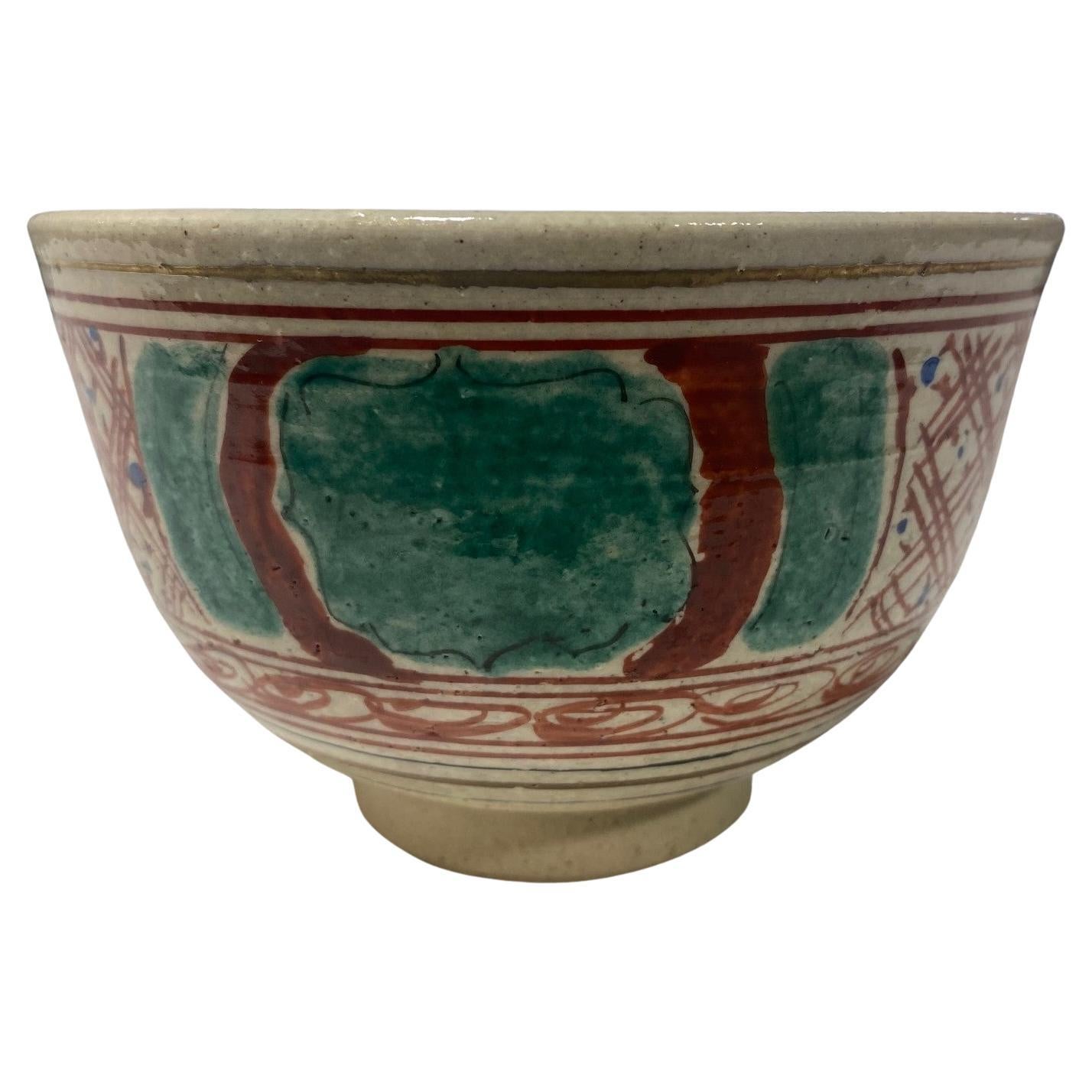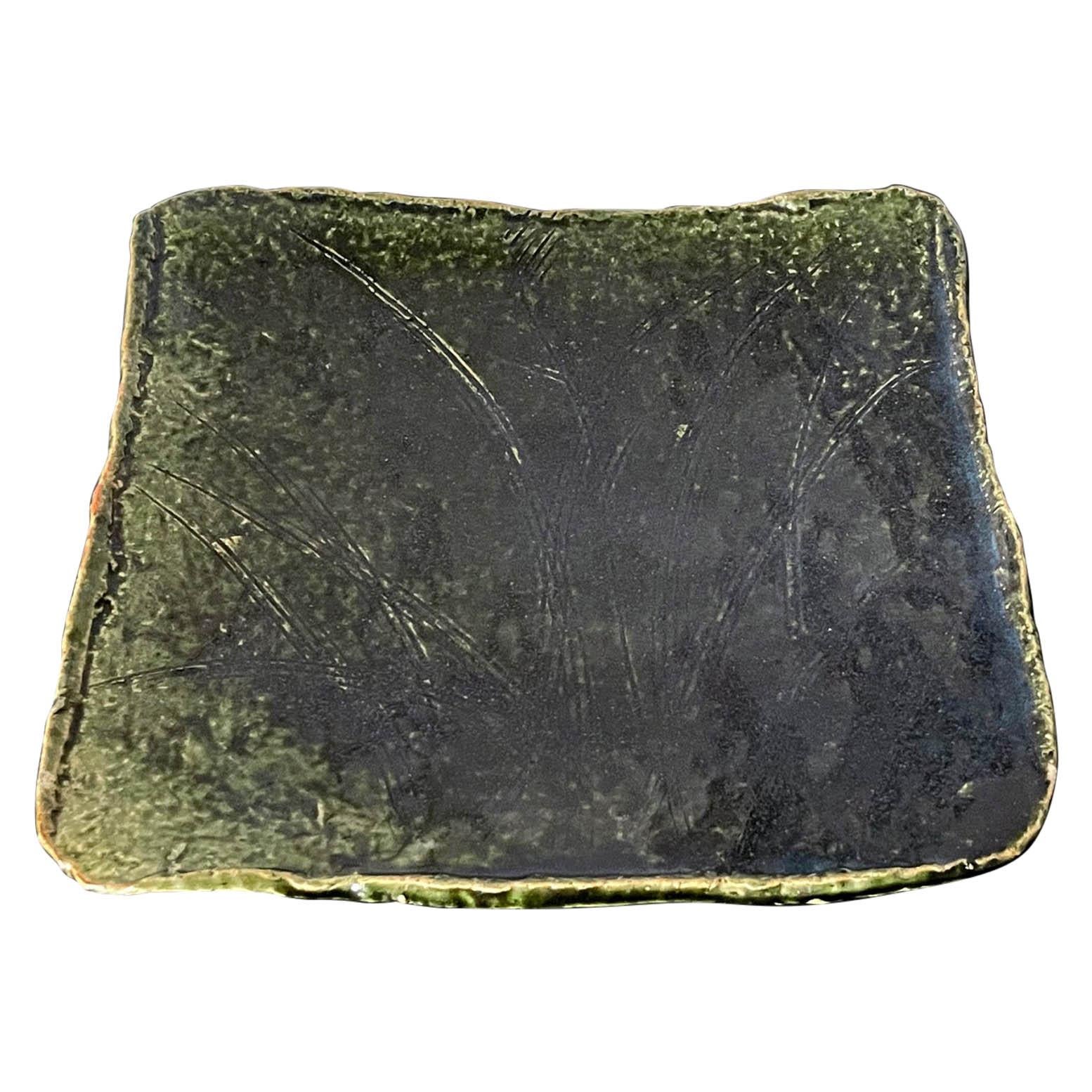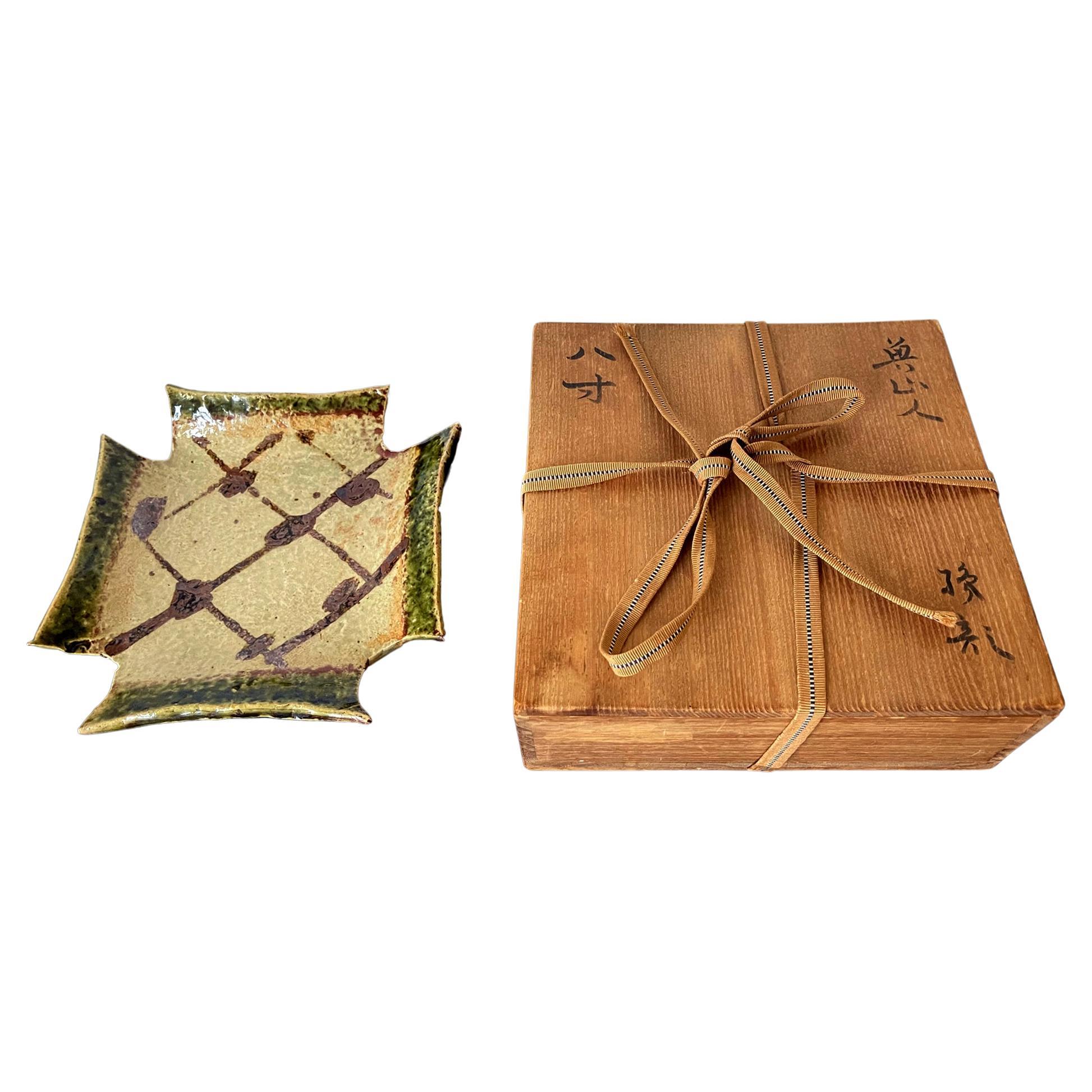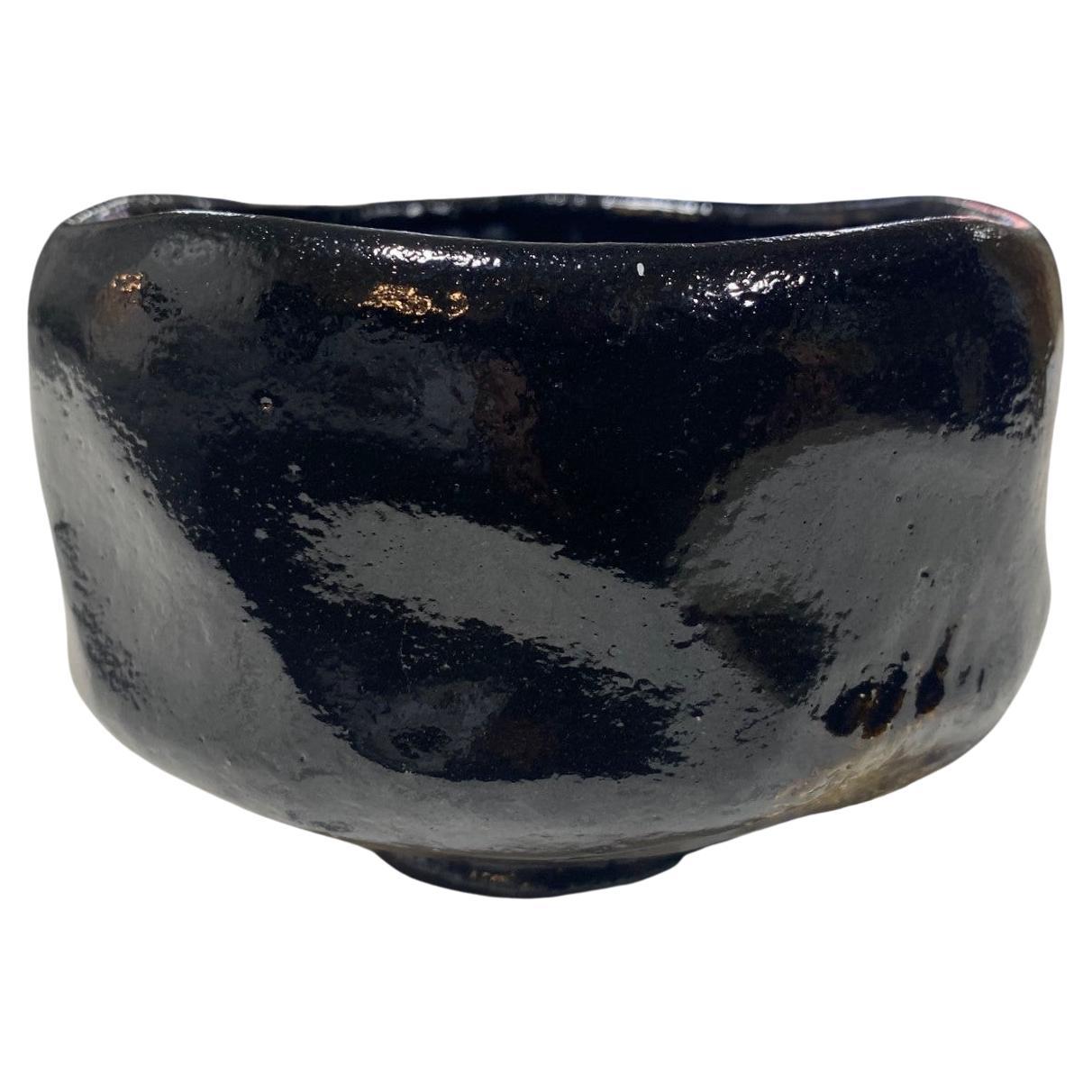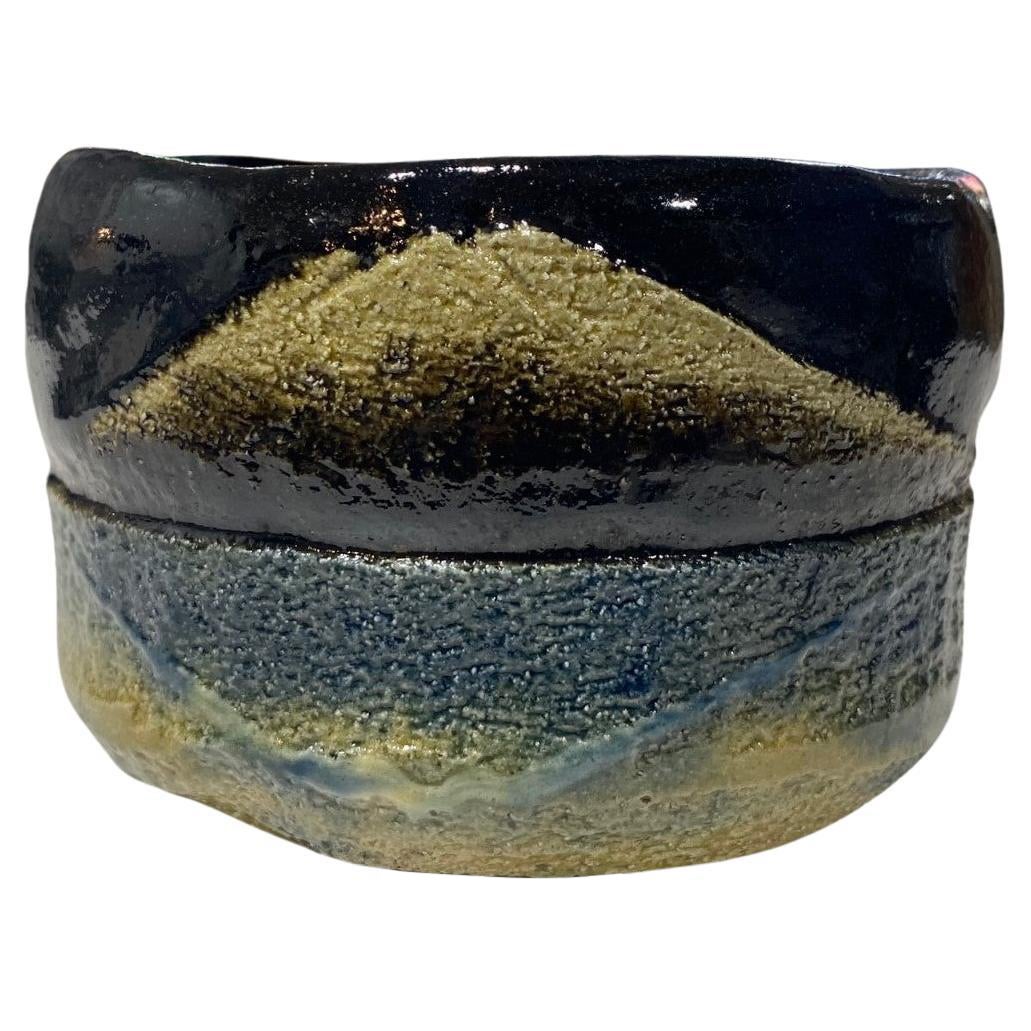Items Similar to Rosanjin Kitaoji Signed Shino Ware Chawan Tea Bowl Original Sealed Signed Box
Want more images or videos?
Request additional images or videos from the seller
1 of 21
Rosanjin Kitaoji Signed Shino Ware Chawan Tea Bowl Original Sealed Signed Box
About the Item
An absolutely gorgeous Shino ware pottery Chawan tea bowl by Japanese master potter Kitaoji Rosanjin (1883-1959) who was arguably one of if not the greatest artists/ceramicists of the 20th century. Rosanjin (whose real name was Kitaoji Fusajiro. In 1922 he changed his name to Kitaoji Rosanjin which translates as “foolish mountain man”) was famed in Japan for many talents - calligrapher, ceramicist, engraver, painter, lacquer artist, and restaurateur.
It is noted that Rosanjin had one of the greatest ceramics collections in Japan in the early part of the 20th century but the Great Tokyo earthquake of 1923 destroyed most of his personal collection so he began making pottery himself to replace it. In 1926 he established his own kiln in the Yamasaki neighborhood of Kamakura. In 1946, after the war, he continued to make his ceramics and art while also opening a restaurant in the Ginza district of Tokyo which catered to upper-echelon Americans. In 1951, he invited sculptor/artist Isamu Noguchi and his wife Yoshiko Otaka the actress to live on his property in Kamakura, where they stayed for several years. In 1954, Rosanjin accepted an invitation from the Rockefeller Foundation to hold a solo exhibition of his works in New York City at the Museum of Modern Art. Afterward, he visited Europe, where he would meet with the esteemed artists Pablo Picasso and Marc Chagall. In 1955, one of his Oribe ware works was designated an Important Cultural Property of Japan by the Japanese government. A few years later in 1959, Rosanjin was designated a Living National Treasure by the Japanese government but was one of the very few nominated people to indignantly decline the honor (he did so twice). The rumor was that he felt insulted that the Japanese government had offered this status to a former studio assistant of his first, and this was how he chose to express his dissatisfaction.
The bowl which features a shino glaze (which radiates in the light) and hand-brushed/painted abstract decoration has Rosanjin's incised signature on the base and comes with the original signed and sealed wood protective box. The work has a Wabi-Sabi - the Japanese aesthetic of appreciating the beauty in objects that are imperfect, impermanent, asymmetrical, modest, and incomplete in nature - feel when gazed upon or held in your hand.
Would clearly be the crown jewel of any Japanese Asian ceramics or art collection. Rosanjin's work has become quite rare and scarce to find, especially in such impeccable condition with the original wood box. A coveted work indeed.
Bowl dimensions: 3.5" high, 5.6" wide, 5.5" deep
Box dimensions: 5" high, 6.5" wide, 6.6" deep.
- Creator:Rosanjin Kitaoji (Artist)
- Dimensions:Height: 3.5 in (8.89 cm)Width: 5.6 in (14.23 cm)Depth: 5.5 in (13.97 cm)
- Style:Showa (Of the Period)
- Materials and Techniques:
- Place of Origin:
- Period:
- Date of Manufacture:1940s-1950s
- Condition:In very good to excellent vintage condition with no discernable flaws, cracks, chips, etc... and light, if any wear consistent with age and use to box only (please see photos). Spectacular and unique overall.
- Seller Location:Studio City, CA
- Reference Number:1stDibs: LU2254328283352
About the Seller
4.9
Platinum Seller
These expertly vetted sellers are 1stDibs' most experienced sellers and are rated highest by our customers.
1stDibs seller since 2016
765 sales on 1stDibs
Typical response time: <1 hour
- ShippingRetrieving quote...Ships From: Studio City, CA
- Return PolicyA return for this item may be initiated within 7 days of delivery.
More From This SellerView All
- Rosanjin Kitaoji Signed Painted Chawan Tea Bowl with Original Sealed Signed BoxBy Rosanjin KitaojiLocated in Studio City, CAAn absolutely gorgeous hand-painted pottery Chawan tea bowl by Japanese master potter Kitaoji Rosanjin (1883-1959) who was arguably one of if not the greatest artists/ceramicists of ...Category
Mid-20th Century Japanese Showa Ceramics
MaterialsCeramic, Pottery
- Rosanjin Kitaoji Signed Shino Ware Sake Tea Cup with Original Sealed Signed BoxBy Rosanjin KitaojiLocated in Studio City, CAAn absolutely gorgeous Shino ware pottery sake/ teacup by Japanese master potter Kitaoji Rosanjin (1883-1959) who was arguably one of if not the great...Category
Mid-20th Century Japanese Showa Ceramics
MaterialsCeramic
- Rosanjin Kitaoji Signed Oribe Ware Tall Basket Vase Original Sealed Signed BoxBy Rosanjin KitaojiLocated in Studio City, CAAn absolutely gorgeous, beautifully decorated large pottery/ceramic basket vase by Japanese master potter Kitaoji Rosanjin (1883-1959) who was arguably one of if not the greatest art...Category
Mid-20th Century Japanese Showa Ceramics
MaterialsCeramic, Pottery
- Shiko Shikou Munakata Rare Signed Japanese Pottery Chawan Tea Bowl Signed BoxBy Shikou MunakataLocated in Studio City, CAAn exceptionally rare, wonderfully designed Chawan tea bowl by famed Japanese master woodblock printmaker/ artist Shiko Munakata (1903-1975) who is widely considered to be the most important Japanese visual artist of the 20th century and the Pablo Picasso of Japan. This hand-painted work clearly illustrates Munakata's whimsical side as it is of a Koma - a child's spinning top toy. Very few examples of Munakata's work in ceramics exist still today. The work is signed by Munakata on the base as well as the original wood protective storage box (his seal can also be seen faintly in the lower-left corner). The bowl has a small kintsugi or "golden joinery" repair - the Japanese art of repairing broken pottery by mending the areas of breakage with lacquer dusted or mixed with powdered gold - on the inside. As a philosophy, it treats breakage and repair as part of the history of an object, rather than something to disguise. Munakata who is often compared to Picasso was primarily associated with and a principal figure in both the Sosaku-Hanga (which stressed the artist as the sole creator ) and the Mingei (folk art) movements. His many accolades and awards include the "Prize of Excellence" at the Second International Print Exhibition in Lugano, Switzerland in 1952, and first prize at the São Paulo Bienal Exhibition in Brazil in 1955, followed by the Grand Prix Award at the Venice Biennale in 1956, and the Order of Cultural Merit, the highest honor in the arts by the Japanese government in 1970. In 1960 after returning from a year abroad exhibiting his work in the United States, the Horinji Temple in Kyoto bestowed upon him the honorary rank of “Hokkyo”. In 1962, he received the rank of “Hogan” from Nisseki Temple in Toyama prefecture. He also received a Medal of Honor in 1963 and the Asahi Shimbun culture prize in 1965. Munakata's work can be found in numerous international collections and museums including: The Britsih Museum, UK The Chicago Art Institute Museum of Modern Art (MOMA), NY The Metropolitan Museum of Art (The Met), NY The Philadelphia Museum of Art The Smithsonian American Art Museum (SAAM), Washington DC Kemper Art Museum, St. Louis And his own museum The Munakata Shiko...Category
Mid-20th Century Japanese Showa Ceramics
MaterialsCeramic
- Sasaki Shoraku III Signed Japanese Raku Pottery Chawan Tea Bowl with Signed BoxLocated in Studio City, CAA wonderful Raku-fired pottery Chawan tea bowl by a renowned Japanese pottery master and one of Kyoto’s most prominent and best-known Raku-yaki potters Sasaki Shoraku III (1944- ). The work features a beautifully contoured body and dark rich glaze. The Shoraku line began when the grandfather of the current potter established a kiln near the famous Kiyomizu Temple, nestled at the foot of the eastern mountains...Category
20th Century Japanese Showa Ceramics
MaterialsPottery
- Sasaki Shoraku III Signed Japanese Raku Pottery Chawan Tea Bowl with Signed BoxLocated in Studio City, CAA wonderful Raku-fired pottery Chawan tea bowl by a renowned Japanese pottery master and one of Kyoto’s most prominent and best-known Raku-yaki potters Sasaki Shoraku III (1944- ). The work features a beautiful image of Mount Fuji which is molded on the body. The Shoraku line began when the grandfather of the current potter established a kiln near the famous Kiyomizu Temple, nestled at the foot of the eastern mountains...Category
20th Century Japanese Showa Ceramics
MaterialsPottery
You May Also Like
- Japanese Oribe Square Dish by Kitaoji RosanjinBy Rosanjin KitaojiLocated in Atlanta, GAAn Oribe-Style rectangular dish with a slightly concaved slab body and up-turned irregular edges, made by Kitaoji Rosanjin (1883-1959) circa 1930-50s....Category
20th Century Japanese Modern Ceramics
MaterialsCeramic
- Japanese Oribe Glazed Stoneware Dish by Kitaoji RosanjinBy Rosanjin KitaojiLocated in Atlanta, GAAn oribe stoneware square dish with four notched corners and up-turned edges made by Kitaoji Rosanjin (1883-1959) circa 1950s. The Mingei style dish h...Category
20th Century Japanese Modern Ceramics
MaterialsCeramic
- Vintage Japanese Oribe Ware Tea Bowl, Chawan, by Matsumoto TetsuzanLocated in Austin, TXA charming vintage Japanese oribe glazed chawan by Matsumoto Tetsuzan (b. 1955), Seto, Japan. The tea bowl, called a chawan, wonderfully potted with...Category
Early 2000s Japanese Edo Ceramics
MaterialsStoneware
- Korean Ceramic Kakinoheta Chawan Tea BowlLocated in Atlanta, GAA "Kakinoheta" type ceramic chawan (tea bowl) made in Korean during Joseon dynasty circa 16th-17th century. The bowl has a slight irregular flat shape w...Category
Antique 17th Century Korean Other Ceramics
MaterialsCeramic
- Korean Ceramic Irabo Tea Bowl Chawan Joseon DynastyLocated in Atlanta, GAA ceramic chawan tea bowl made in Korea for Japanese market circa 17th century. The chawan is identified as Irabo type. Irabo bowls were essentially con...Category
Antique 17th Century Korean Other Ceramics
MaterialsCeramic
- Antique Korean Mishma Tea Bowl Chawan Joseon DynastyLocated in Atlanta, GAA Korean Hori-Mishima Chawan (tea bowl) circa 16th-17th century (Joseon Dynasty). The tea bowl is of an upright conical form supported by a high foot ring. It was decorated with incised brushwood fence patterns filled with white slip on both the interior and exterior surface. These dominant motifs were spaced by three encircling double lines. Seven chrysanthemum flowers (inka) were stamped on the lower interior surrounding a swirling tea well on the bottom. There are six spur marks known as Meato in Japanese on the interior bottom and a pointy spot in the center of the foot ring known as Tokin. Two crack lines were historically repaired by superb Kintsugi, adding a mysterious wabi-sabi appeal to the piece. The Hori-Mishima bowl was also known as Gohon Mishima. It was made in Bushan Kilns of the Southern Gyeongsang Province specifically for the Japanese market in the 16th-17th century, when the tea ceremonies in Japan demanded such ware. The bowl comes with a purple fabric pouch...Category
Antique 17th Century Korean Other Ceramics
MaterialsCeramic
Recently Viewed
View AllMore Ways To Browse
Asian Art Signed
Signed Bowl
Seal Brown
Seal Collection
Vintage Light Box Signs
Vintage Light Box Sign
Retro Light Box Sign
Vintage Hand Brush
Used Ceramics Kilns
Asian Man Art
Vintage Rockefeller
Asian Seal
Vintage Treasure Craft
Japanese Seal
Great Seal
Vintage Crown Jewels
Aesthetic Vintage Japanese
American Art Studio Ceramics
